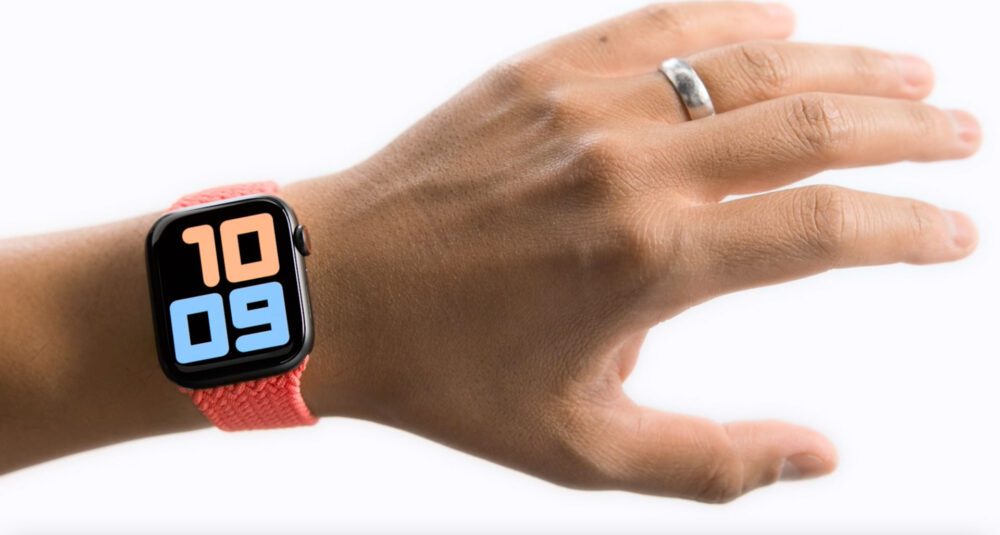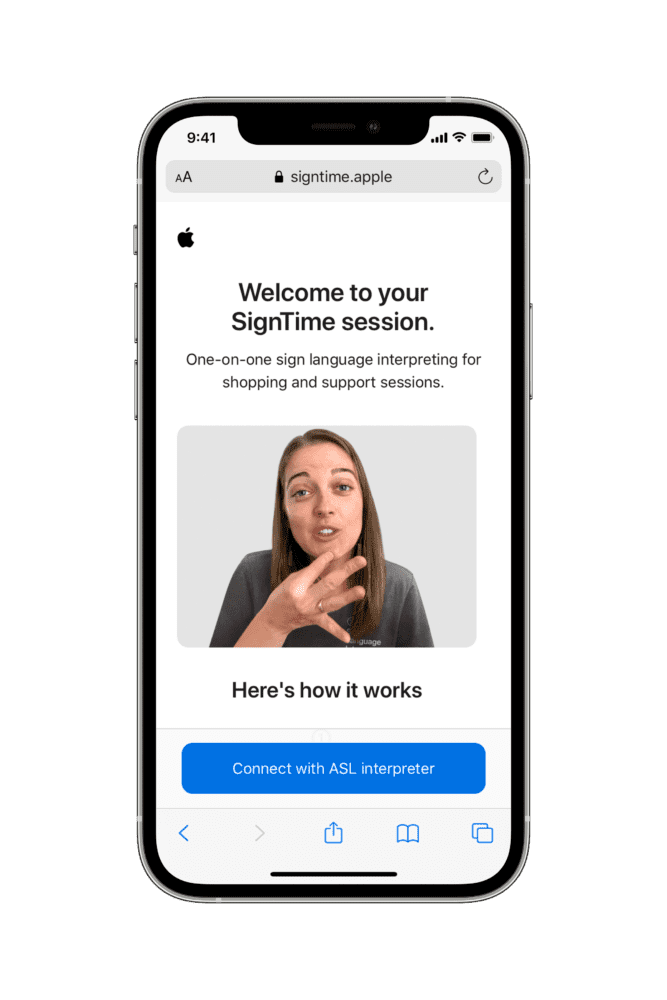Apple announces powerful software features designed for people with mobility, vision, hearing, and cognitive disabilities. These next-generation technologies showcase Apple’s belief that accessibility is a human right and advance the company’s long history of delivering industry-leading features that make Apple products customisable for all users.
Later this year, with software updates across all of Apple’s operating systems, people with limb differences will be able to navigate Apple Watch using AssistiveTouch; iPad will support third-party eye-tracking hardware for easier control; and for blind and low vision communities, Apple’s industry-leading VoiceOver screen reader will get even smarter using on-device intelligence to explore objects within images. In support of neurodiversity, Apple is introducing new background sounds to help minimise distractions, and for those who are deaf or hard of hearing, Made for iPhone (MFi) will soon support new bi-directional hearing aids.

Apple is also launching a new service called SignTime. This enables customers to communicate with AppleCare and Retail Customer Care by using American Sign Language (ASL) in the US, British Sign Language (BSL) in the UK, or French Sign Language (LSF) in France, right in their web browsers. Customers visiting Apple Store locations can also use SignTime to remotely access a sign language interpreter without booking ahead of time. SignTime will initially launch in the US, UK, and France, with plans to expand to additional countries in the future.
 “At Apple, we’ve long felt that the world’s best technology should respond to everyone’s needs, and our teams work relentlessly to build accessibility into everything we make,” said Sarah Herrlinger, Apple’s senior director of Global Accessibility Policy and Initiatives. “With these new features, we’re pushing the boundaries of innovation with next-generation technologies that bring the fun and function of Apple technology to even more people — and we can’t wait to share them with our users.”
“At Apple, we’ve long felt that the world’s best technology should respond to everyone’s needs, and our teams work relentlessly to build accessibility into everything we make,” said Sarah Herrlinger, Apple’s senior director of Global Accessibility Policy and Initiatives. “With these new features, we’re pushing the boundaries of innovation with next-generation technologies that bring the fun and function of Apple technology to even more people — and we can’t wait to share them with our users.”
The new updates will include:
AssistiveTouch for Apple Watch
To support users with limited mobility, Apple is introducing a revolutionary new accessibility feature for Apple Watch. AssistiveTouch for watchOS allows users with upper body limb differences to enjoy the benefits of Apple Watch without ever having to touch the display or controls. Using built-in motion sensors like the gyroscope and accelerometer, along with the optical heart rate sensor and on-device machine learning, Apple Watch can detect subtle differences in muscle movement and tendon activity, which lets users navigate a cursor on the display through a series of hand gestures, like a pinch or a clench. AssistiveTouch on Apple Watch enables customers who have limb differences to more easily answer incoming calls, control an onscreen motion pointer, and access Notification Center, Control Center, and more.
Eye-Tracking Support for iPad
iPadOS will support third-party eye-tracking devices, making it possible for people to control iPad using just their eyes. Later this year, compatible MFi devices will track where a person is looking onscreen and the pointer will move to follow the person’s gaze, while extended eye contact performs an action, like a tap.
Explore Images with VoiceOver
Apple is introducing new features for VoiceOver, an industry‑leading screen reader for blind and low vision communities. Building on recent updates that brought Image Descriptions to VoiceOver, users can now explore even more details about the people, text, table data, and other objects within images. Users can navigate a photo of a receipt like a table: by row and column, complete with table headers. VoiceOver can also describe a person’s position along with other objects within images — so people can relive memories in detail, and with Markup, users can add their own image descriptions to personalise family photos.
Made for iPhone Hearing Aids and Audiogram Support
In a significant update to the MFi hearing devices program, Apple is adding support for new bi-directional hearing aids. The microphones in these new hearing aids enable those who are deaf or hard of hearing to have hands-free phone and FaceTime® conversations. The next-generation models from MFi partners will be available later this year.
Apple is also bringing support for recognising audiograms — charts that show the results of a hearing test — to Headphone Accommodations. Users can quickly customise their audio with their latest hearing test results imported from a paper or PDF audiogram. Headphone Accommodations amplify soft sounds and adjust certain frequencies to suit a user’s hearing.
Background Sounds
Everyday sounds can be distracting, discomforting, or overwhelming, and in support of neurodiversity, Apple is introducing new background sounds to help minimise distractions and help users focus, calm, or rest. Balanced, bright, or dark noise, as well as ocean, rain, or stream sounds continuously play in the background to mask unwanted environmental or external noise, and the sounds mix into or duck under other audio and system sounds.
Additional features coming later this year include:
Sound Actions for Switch Control replaces physical buttons and switches with mouth sounds — such as a click, pop, or “ee” sound — for users who are non-speaking and have limited mobility.
Display and Text Size settings can be customised in each app for users with colourblindness or other vision challenges to make the screen easier to see. Users will be able to customise these settings on an app-by-app basis for all supported apps.
New Memoji™ customisations better represent users with oxygen tubes, cochlear implants, and a soft helmet for headwear.
In celebration of Global Accessibility Awareness Day, Apple is also launching new features, sessions, curated collections, and more:
This week in Apple Fitness+℠, trainer and award-winning adaptive athlete Amir Ekbatani talks about Apple’s commitment to making Fitness+ as accessible and inclusive as possible. Fitness+ features workouts inviting to all, from trainers using sign language in each workout to say “Welcome” or “Great job!,” to “Time to Walk” episodes changing to “Time to Walk or Push” for wheelchair workouts on Apple Watch, and all videos include closed captioning. Fitness+ also includes a trainer demonstrating modifications in each workout, so users at all levels can join in.

















